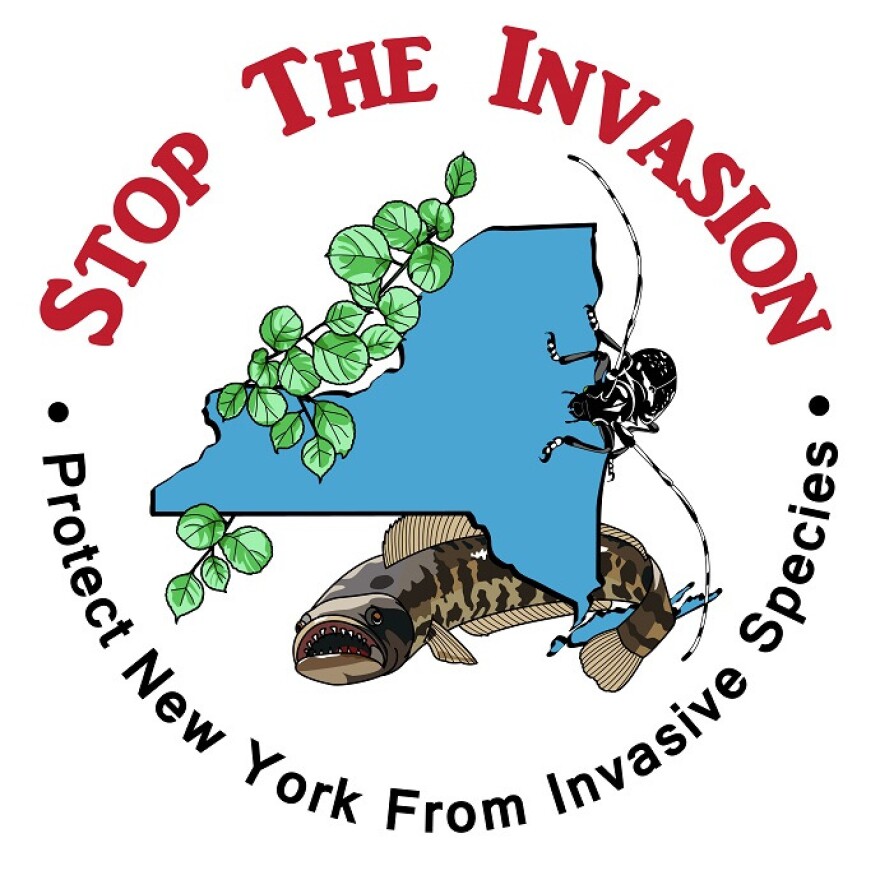New York’s annual Invasive Species Awareness Week begins on Sunday. This year, the focus is on what individuals can do to stop the spread of the plants and animals.
The Adirondack Park Invasive Plant Program, which actually coordinates efforts for all forms of invasives, is helping to coordinate awareness week efforts in the North Country. Program Manager Brendan Quirion says the annual effort has resulted in a cohesive strategy across New York state. “Each one of the various Partnerships for Regional Invasive Species Management, or PRISMs, and their partners are hosting events and organizing events under this one theme or banner. And this year’s theme is what you can do to prevent the spread of invasive species. And you know each one of those regional organizations is hosting a variety of trainings and events throughout the week whether it be formal conferences, invasive species informational tables. So the cohesiveness around each PRISM you know hosting events under that one theme is I think what has been the most effective.”
The theme focuses on what you can do to stop the spread of invasives because, as Quirion points out, individuals are the most critical component in the fight. "Invasive species just don’t show up anywhere and everywhere. They really are transported by people and they follow where people have been. So by taking these preventative actions, whether it be cleaning and draining and drying your boat and equipment after each boating or fishing trip or just cleaning the mud and debris off your boots and equipment after hiking or camping, those are simple steps that anyone can take to prevent the spread and really avoid impacts and having us need to dedicate resources to control it after the fact.”
Lake Champlain Basin Program Technical Associate Ellen Kujawa finds people are becoming better informed and more involved regarding the prevention and control of invasive species. “This personal responsibility of preventing the spread of invasive species is something that people seem to be really getting invested in. And it helps that many of the steps we use to prevent the spread are relatively simple. You know we’ve said clean, drain, dry and that’s three steps that take five minutes when you retrieve your boat. And there are other sort of corresponding steps you can use to prevent terrestrial invaders. I think people are really invested in invasive species and in preserving and protecting their ecosystems.”
A new Vermont law requires mandatory boat inspections for invasive species.
Vermont Department of Environmental Conservation Aquatic Invasive Species Management Coordinator Josh Mulhollem explains that the law was signed last June but a full rollout was difficult last year. “This law doesn’t appreciably change the work that we’ve been doing with watercraft inspections. The only difference is now when a boater encounters an open inspection station that is currently you know manned by an inspector then the boater is required to comply with the inspection and any subsequent decontamination recommended by the inspector. But we’ve had a voluntary program with watercraft inspectors going on in this state since 2002. There are roughly 30 public access launches that are covered by watercraft inspectors and that’s been slowly going up in the last well since its inception in 2002. This doesn’t change what’s been going on but now boaters do have to comply.”
Mulhollem reports that the watercraft inspection program he coordinates asks boaters how much they know about invasive species and if they take precautions to prevent their spread. “According to the data that we’ve collected over the last couple of years over 90 percent of boaters are very aware of invasive species. They’re very aware of the issues that they cause and they say that they take steps to prevent their spread. I work pretty closely with partners in New York’s DEC and I know that they’ve been seeing similar results.”
Links for more information:
www.keepinvasivespeciesout.com
https://www.dec.ny.gov/animals/105650.html
https://stoptheinvasionny.com/calendar-of-events/







